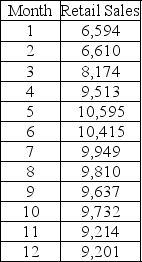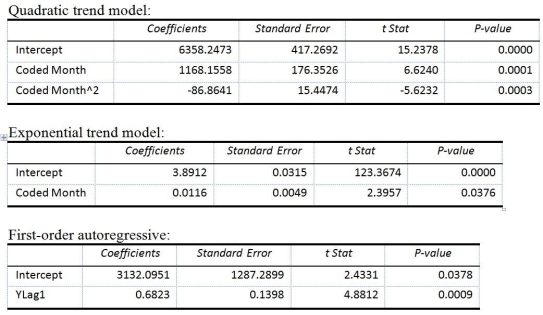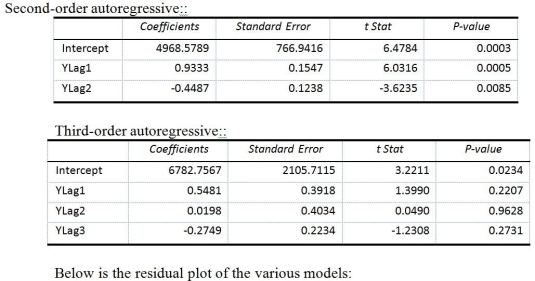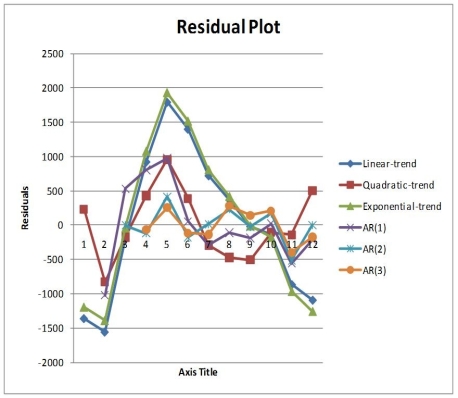TABLE 16-13
Given below is the monthly time-series data for U.S. retail sales of building materials over a specific year.

The results of the linear trend, quadratic trend, exponential trend, first-order autoregressive, second-order autoregressive and third-order autoregressive model are presented below in which the coded month for the first month is 0:




-Referring to Table 16-13, what is the exponentially smoothed value for the 12ᵗʰ month using a smoothing coefficient of W = 0.5 if the exponentially smooth value for the 10ᵗʰ and 11ᵗʰ month are 9,746.3672 and 9,480.1836, respectively?
Definitions:
Secure New Rights
The process of establishing or obtaining recognition for new legal entitlements or privileges.
Conflict Between People
A situation where individuals or groups have opposing ideas, interests, or goals leading to disagreement or dispute.
Appeal Procedures
The systematic process through which a decision or judgment can be challenged or reviewed by a higher authority.
Tolerance For Conflict
The capacity to manage and endure disagreements or disputes without adverse effects.
Q13: A regression had the following results: SST
Q28: Referring to Table 17-7, based on the
Q72: Referring to Table 16-4, exponential smoothing with
Q77: Referring to Table 16-14, to obtain a
Q112: A simple price index tracks the price
Q141: Referring to Table 16-5, the number of
Q227: Referring to Table 6-1 and assuming that
Q243: Blossom's Flowers purchases roses for sale for
Q306: Referring to Table 7-2, what is the
Q330: Referring to Table 14-15, the null hypothesis